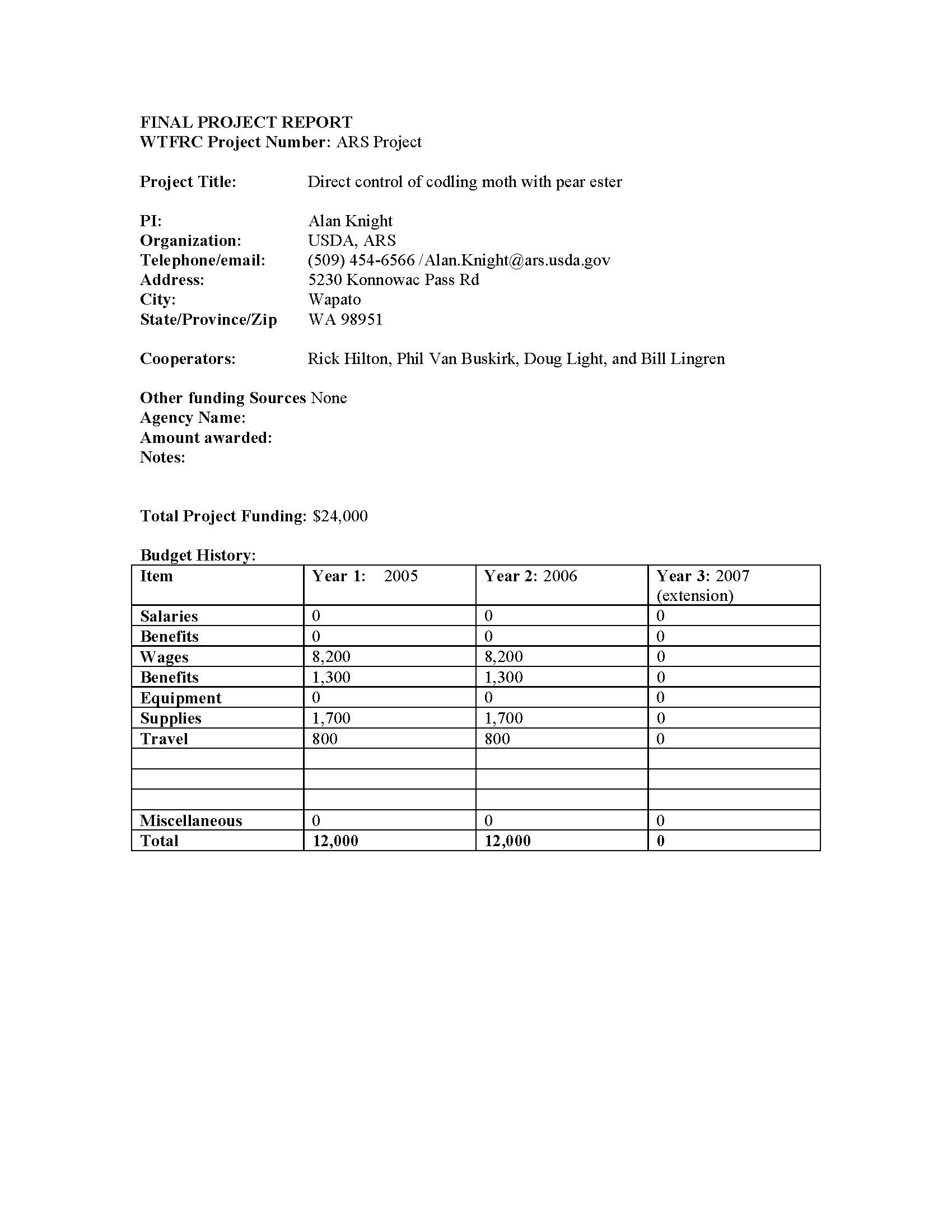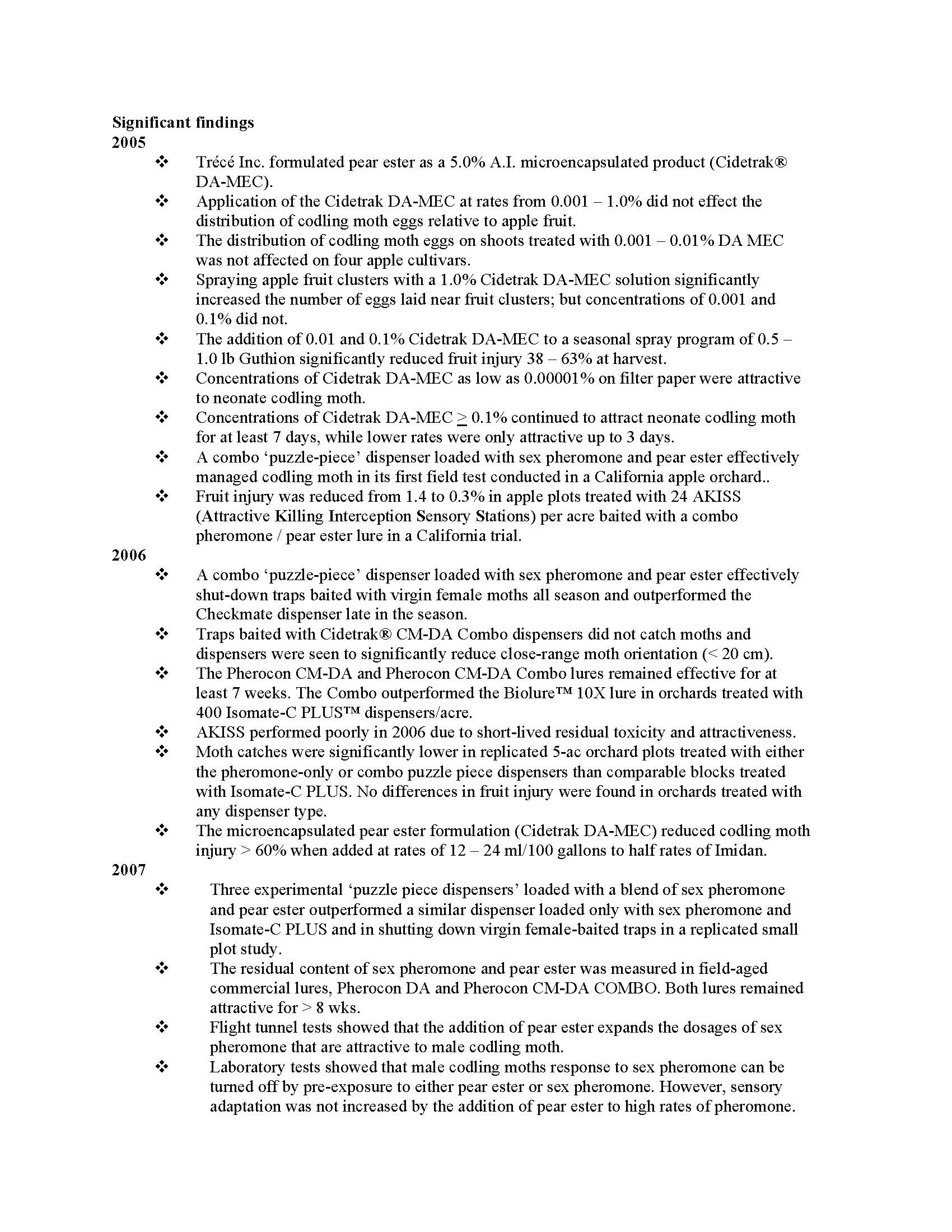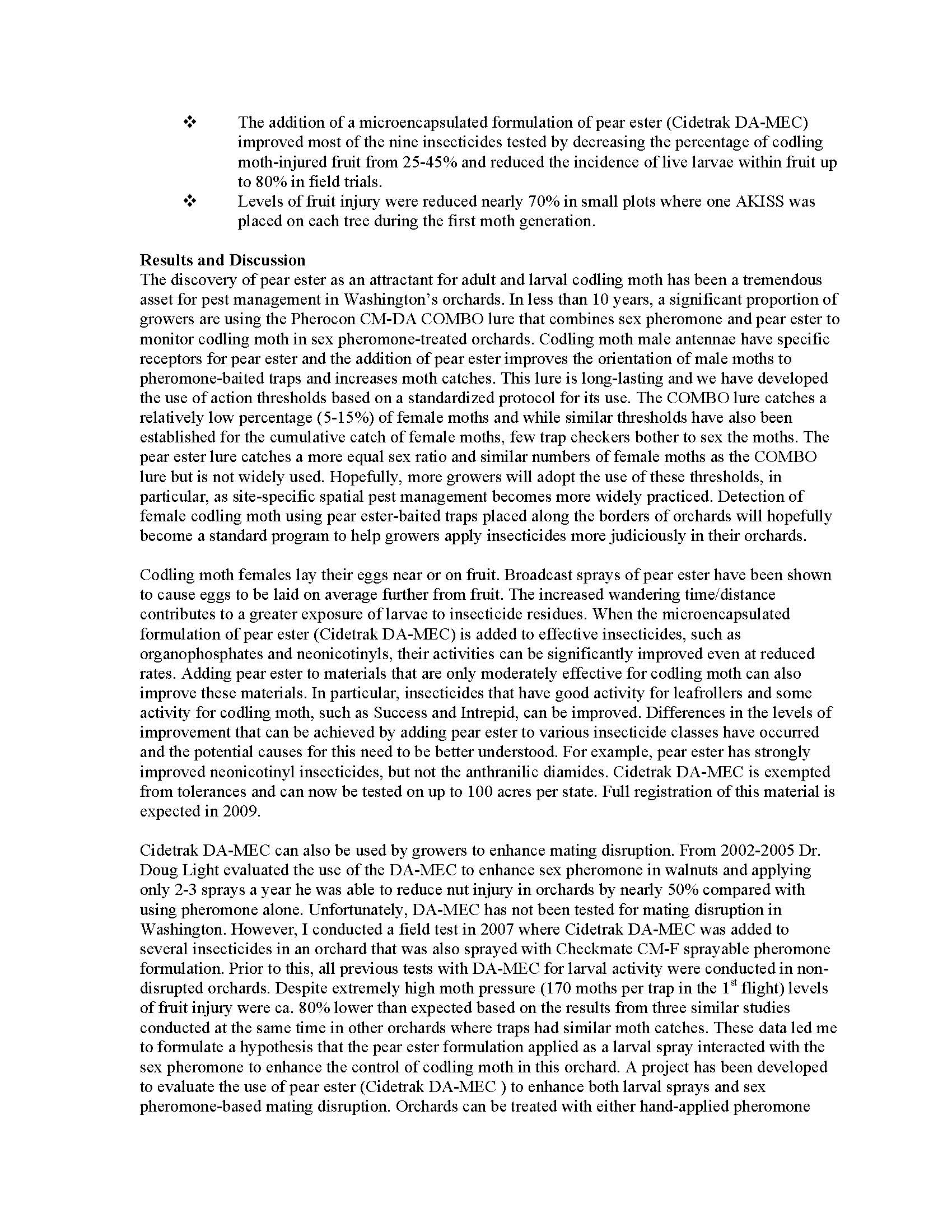Direct control of codling moth with pear ester
Author: Alan Knight
Published: 2007
Summary: Efforts to develop an effective, easy-to-use, and inexpensive killing station baited with pear ester have been underway since 2001 with support from the WTFRC. The use of mass-trapping with pear ester-baited traps was not effective as we found that female codling moths avoid entering into standard trap designs. Similarly, coating traps with insecticides on both the outside and inside was very effective only during the first moth flight and provide inadequate control during the second moth flight due to the low numbers of female moths that were killed by these traps. Several years were spent evaluating different designs but ultimately these were scrapped as insecticide residues did not last long enough and killing stations had to be frequently serviced and replaced. Future studies will address the use of a new synergized pear ester lure developed by Dr. Peter Landolt and several new designs of the killing station. These studies are primarily focused on developing a useful product for homeowners to manage backyard trees and to develop a tool for growers to supplement control along orchard borders where moth immigration into orchards is concentrated.
Keywords:




